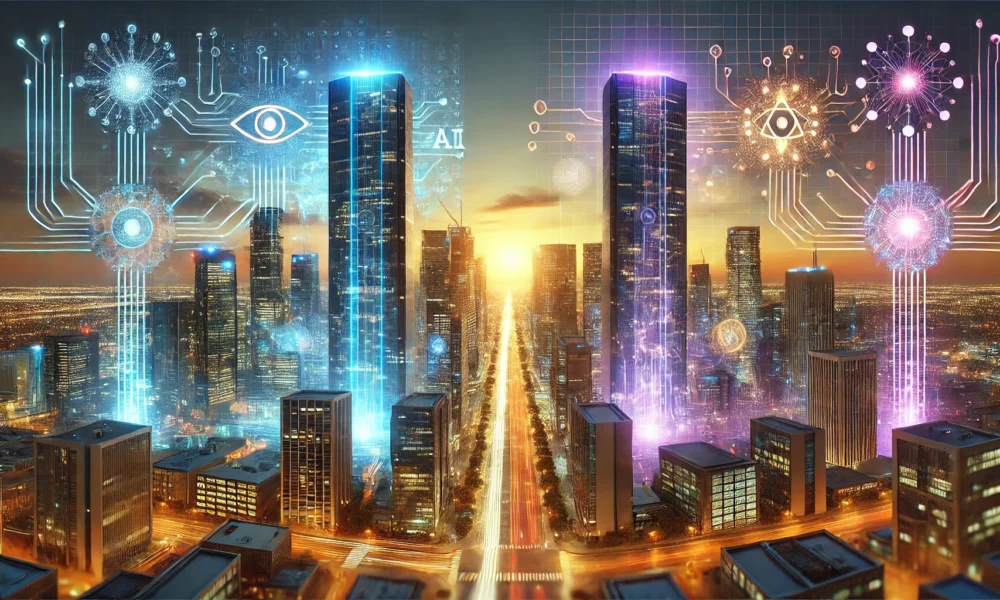Microsoft and OpenAI: Revolutionizing Artificial Intelligence Together
In recent years, Microsoft and OpenAI have risen to the top of the AI domain, shaping the industry’s progress through their groundbreaking partnership. Microsoft’s substantial investments in OpenAI have paved the way for rapid advancements in AI model development, powering Azure services and enhancing products like Office and Bing. This collaboration promises a future where AI drives productivity and empowers intelligent business decisions.
Navigating the Evolving Microsoft-OpenAI Partnership
The partnership between Microsoft and OpenAI is evolving as both companies pursue different goals. OpenAI’s quest for additional funding and computing power raises questions about Microsoft’s role and potential stake in a more profitable version of OpenAI. Meanwhile, Microsoft’s recruitment from rival Inflection AI suggests a move to diversify its AI capabilities. As OpenAI establishes a satellite office near Microsoft’s headquarters, collaboration and competition intertwine, adding complexity to the relationship.
Unraveling the Microsoft-OpenAI Collaboration
Microsoft and OpenAI initiated their collaboration to integrate advanced AI into the business world, leveraging OpenAI’s transformative models like GPT-2 and DALL-E. This resulted in enhanced Azure capabilities for developing AI solutions catering to Microsoft’s enterprise customers, propelling a competitive edge. However, differing priorities led to a shift from collaboration to competition, challenging the nature of their relationship.
The Financial and Strategic Dynamics Between Microsoft and OpenAI
While Microsoft initially supported OpenAI’s growth with crucial resources, recent endeavors by OpenAI for independence prompted a reevaluation of their financial and strategic agreements. OpenAI’s pursuit of profitability while upholding ethical AI standards poses challenges in balancing interests with Microsoft’s expectations. With the launch of SearchGPT, a direct competitor to Bing, tensions rise as OpenAI’s consumer-focused approach clashes with Microsoft’s enterprise-centric vision.
Striking a Balance Between Innovation and Exclusivity
The Microsoft-OpenAI partnership juxtaposes Microsoft’s proprietary systems with OpenAI’s open-source models, raising questions about maintaining exclusivity amidst open developments. For businesses reliant on Azure’s AI tools, shifts in this partnership could prompt considerations of alternative cloud providers like Google Cloud or AWS. Navigating the fusion of Microsoft’s secure solutions with OpenAI’s collaborative approach will be critical for sustaining their partnership’s value proposition.
Implications of the Changing Microsoft-OpenAI Relationship
The evolving Microsoft-OpenAI relationship has far-reaching implications for the AI industry, shaping the future landscape of AI applications. As both companies redefine their paths, businesses and developers face uncertainty, with the balance between commercial growth and ethical responsibility at the forefront. The decisions made by Microsoft and OpenAI will reverberate across the industry, influencing how AI technologies are embraced and utilized.
Final Thoughts on the Microsoft-OpenAI Collaboration
Microsoft and OpenAI’s evolving partnership epitomizes the current dilemmas and possibilities in AI development. As they navigate the tension between control and openness, their choices will impact businesses, developers, and users alike. Whether they opt for collaboration, competition, or a middle ground, the next steps taken by Microsoft and OpenAI will undoubtedly shape the AI landscape, dictating how society interacts with this transformative technology.
-
Why is there tension between Microsoft and OpenAI?
The tension between Microsoft and OpenAI stems from differing views on the direction of artificial intelligence research and development. Microsoft has a more profit-driven approach, while OpenAI aims to prioritize ethical considerations and public good in AI advancement. -
How does the tension between Microsoft and OpenAI impact the future of AI?
The tension between Microsoft and OpenAI could potentially hinder collaboration and innovation in the AI field. It may lead to competing models of AI development, with each organization pursuing its own agenda and goals. -
What are some potential implications of the tension between Microsoft and OpenAI?
The tension between Microsoft and OpenAI could lead to a divided AI research community, with experts and resources being split between the two organizations. This could slow down progress in the field and limit the potential benefits of AI technologies for society. -
Is there any hope for resolution between Microsoft and OpenAI?
While the tension between Microsoft and OpenAI is currently ongoing, there is always a possibility for reconciliation and collaboration in the future. Both organizations may eventually find common ground and work together towards common goals in AI development. - How should stakeholders in the AI community navigate the tension between Microsoft and OpenAI?
Stakeholders in the AI community should carefully consider the differing perspectives and approaches of Microsoft and OpenAI, and strive to promote open dialogue and cooperation between the two organizations. By fostering communication and collaboration, stakeholders can help bridge the gap and promote mutual understanding in the AI field.
Related posts:
- The Pursuit of AGI by OpenAI: GPT-4o vs. the Future Model
- Implications of Elon Musk’s Latest Lawsuit Against OpenAI on the AI Industry
- Introducing OpenAI o1: Advancing AI’s Reasoning Abilities for Complex Problem Solving
- AI’s Solution to the ‘Cocktail Party Problem’ and the Future of Audio Technologies


No comment yet, add your voice below!